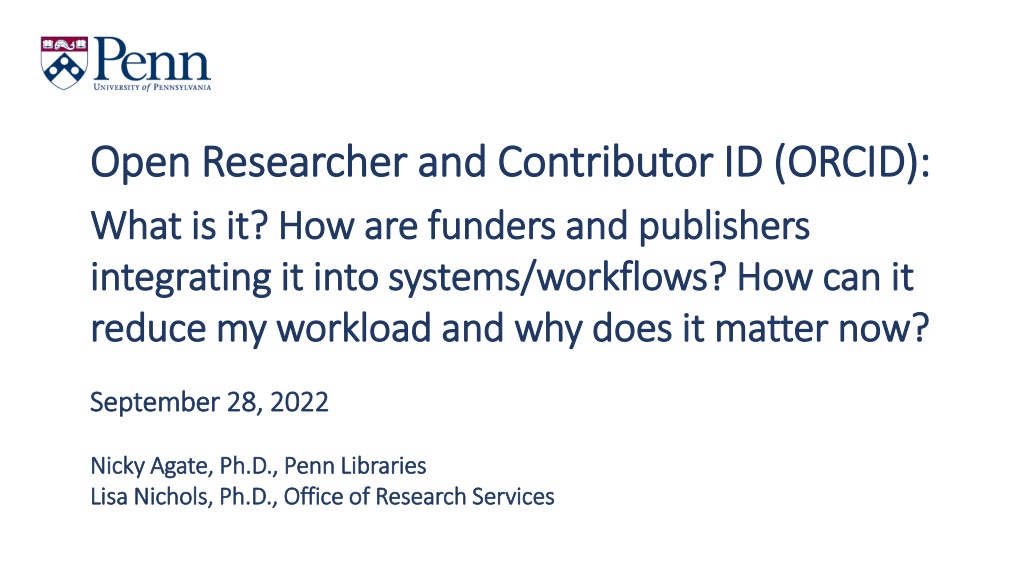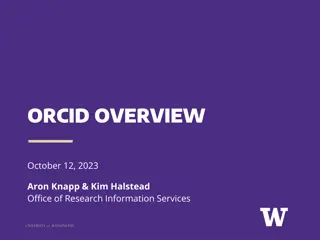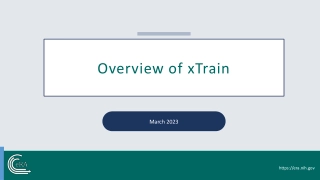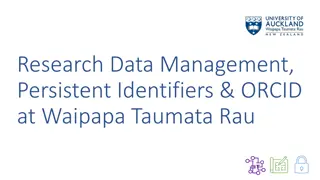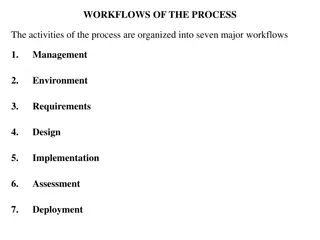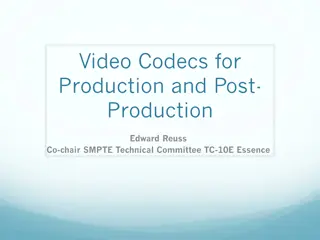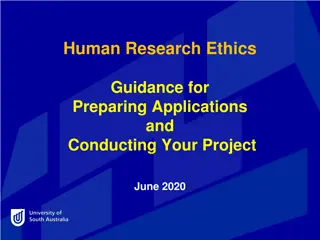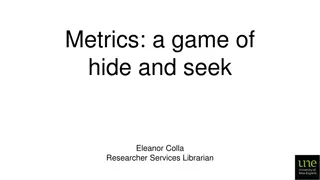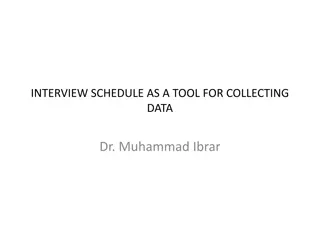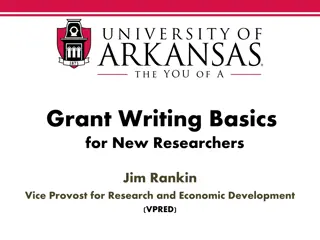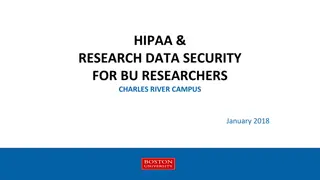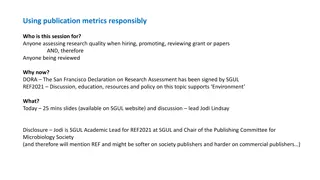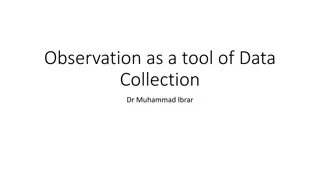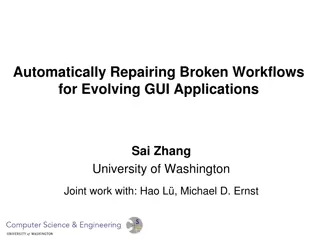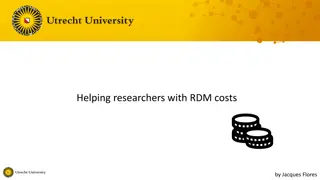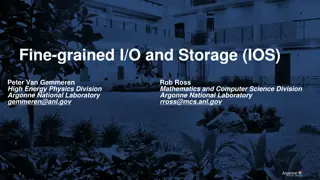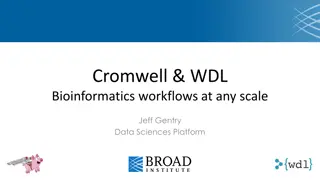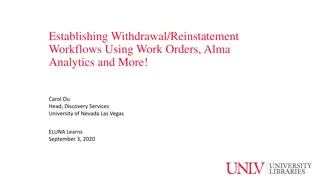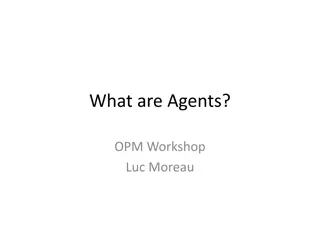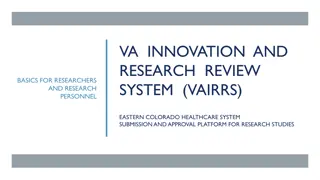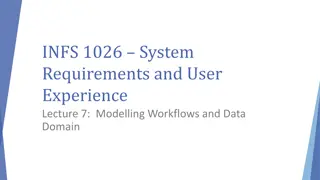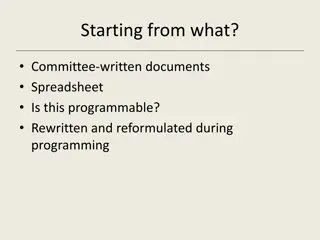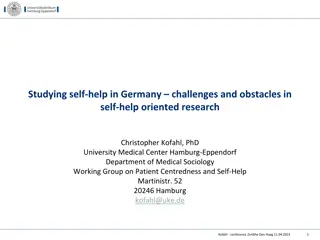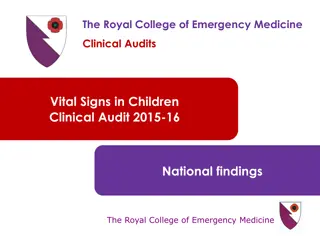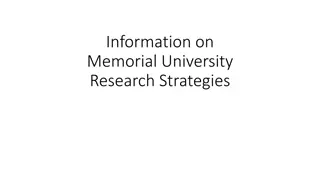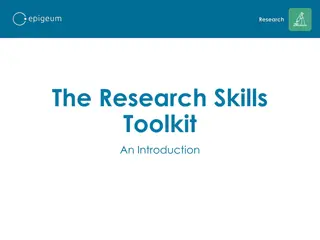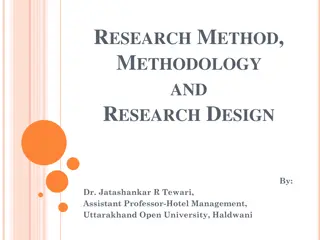Integrating ORCID into Research Workflows: A Vital Tool for Researchers
ORCID (Open Researcher and Contributor ID) is a unique identifier that streamlines scholarly work tracking, affiliations, and data visibility. Funders, publishers, and researchers worldwide are adopting ORCID to enhance workflow efficiency, data accuracy, and impact assessment. Integration of ORCID reduces administrative burden, ensures data consistency, and aligns with federal research funding policies, making it a critical tool for researchers in today's digital research landscape.
Download Presentation

Please find below an Image/Link to download the presentation.
The content on the website is provided AS IS for your information and personal use only. It may not be sold, licensed, or shared on other websites without obtaining consent from the author. Download presentation by click this link. If you encounter any issues during the download, it is possible that the publisher has removed the file from their server.
E N D
Presentation Transcript
Open Researcher and Contributor ID (ORCID): Open Researcher and Contributor ID (ORCID): What is it? How are funders and publishers What is it? How are funders and publishers integrating it into systems/workflows? How can it integrating it into systems/workflows? How can it reduce my workload and why does it matter now? reduce my workload and why does it matter now? September 28, 2022 September 28, 2022 Nicky Agate, Ph.D., Penn Libraries Nicky Agate, Ph.D., Penn Libraries Lisa Nichols, Ph.D., Office of Research Services Lisa Nichols, Ph.D., Office of Research Services
What is ORCID? What is ORCID? An ORCID (Open Researcher and Contributor ID) is a unique persistent identifier (like a DOI for researchers!) that connects you to all of your scholarly work in one profile. Think of it as portable profile data portable profile data. With an ORCID you can: Be consistently affiliated with your research outputs (data, publications, grants, awards, code even peer reviews) even while your name, title, and affiliation may change Have your ORCID iD automatically affiliated with your federal awards and research outcomes by federal agencies Spend less time on administrative tasks Watch forms auto-populate when you use your ORCID to log into sponsor, publisher, and other trusted systems and have your data and grants added back to your profile by trusted partners Control the access, use, and visibility of your information down to the item level Tell your impact story
Who uses ORCID? Who uses ORCID? Partners across the research ecosystem use this distributed, accumulative trust model Government Government: US Government ORCID Consortium (NASA, Brookhaven, CDC, USGS, EPA, etc.) Funders Funders: American Heart Association, Howard Hughes Medical Institute, Simons Foundation, NIH, NSF, etc. Publishers Publishers: Elsevier, Clarivate, IEEE, IGI, ISI, PNAS, ProQuest, PLoS, Sage, Wiley, etc. Research organizations Research organizations Systems Systems: Plum Analytics, Dimensions, Digital Science A global community of researchers A global community of researchers: 15 million ORCID iDs in the registry; 10,000 records created every day
How will ORCIDs be used by federal research funders? How will ORCIDs be used by federal research funders? In 2022 alone: In 2022 alone: National Security Presidential Memorandum (NSPM)-33 Implementation Guidance OSTP policy, Ensuring Free, Immediate, and Equitable Access to Federally Funded Research
How will ORCIDs be used by federal research funders? How will ORCIDs be used by federal research funders? National Security Presidential Memorandum (NSPM) National Security Presidential Memorandum (NSPM)- -33 33 Issued January 14, 2021 - Interagency effort led by the White House Office of Science and Technology Policy (OSTP), the National Institutes of Health, and the National Science Foundation Directs federal research funding agencies to establish requirements for researchers supported by or working on any Federal research grant to register with a service that provides a digital persistent identifier.
How will ORCIDs be used by federal research funders? How will ORCIDs be used by federal research funders? National Security Presidential Memorandum 33 Implementation Guidance National Security Presidential Memorandum 33 Implementation Guidance Issued January 4, 2022. Directs federal research funding agencies to: Incorporate persistent identifiers (PIDs) into their electronic systems and grant and cooperative agreement application and disclosure processes o Agencies may require PIDs as NIH has for research training, fellowship, education, and career development awards since FY2020 o ORCID is the PID for individuals/researchers that meets federal requirements (e.g., non-proprietary). o Some agencies, such as NSF, will specify use of ORCID. Allow, not require, submission of disclosure information via a PID service o Researchers can choose whether to make information available through their PID profile/record, such as ORCID.
How will ORCIDs be used by federal research funders? How will ORCIDs be used by federal research funders? The August 25, 2022, OSTP policy, Ensuring Free, Immediate, and Equitable Access to Federally Funded Research directs federal agencies to: Instruct federally funded researchers to obtain a persistent identifier researchers to obtain a persistent identifier per the NSPM-33 Implementation Guidance, include it in published research outputs, and provide federal include it in published research outputs, and provide federal agencies with the metadata associated with all published research outputs they produce agencies with the metadata associated with all published research outputs they produce, consistent with the law, privacy, and security considerations. Assign unique persistent identifiers to all scientific research and development awards Assign unique persistent identifiers to all scientific research and development awards and intramural research protocols that have appropriate metadata linking the funding agency and their awardees through their digital persistent identifiers.
Reducing Administrative Burden Reducing Administrative Burden Maintain information in your ORCID record that can be accessed by research funders, publishers, your institution, and others at your discretion Work history, education, affiliations, funding awards, publications, data sets and other information that can auto-populate grant proposals and other forms. Allow trusted organizations (e.g., NIH and Penn) to access and add research information in your ORCID record (i.e., read and write). Facilitates interoperability and data sharing between systems and workflows. o Allows research sponsors to pre-populate proposals and other forms with information in your profile (e.g., CV, biosketch, current and pending support) NIH and NSF already allow researchers to import data from ORCID into SciENcv for Biosketches and will do the same for current and pending support. Reduces initial and duplicative data entry with trusted organizations Permissions can be revoked by you at any time
Reducing Administrative Burden Reducing Administrative Burden Ability to exchange information from multiple systems. Examples include: CrossRef Metadata Search DataCite Europe PubMed Central ISNI The Lens MLA International Bibliography DOE/OSTI ResearcherID Scopus Author ID OpenAire And more
How do I build and optimize my profile/record? How do I build and optimize my profile/record? orcid.org/register orcid.org/register The more you put into your ORCID profile now (data + trusted relationships) the more time it will save you in the future! ORCID records can contain: Biographical information Affiliations (employment, education, qualifications, invited positions, distinctions, memberships, and service) Funding received Works produced Peer review activity Research resources used (facilities, equipment, labs, etc.)
How do I build and optimize my profile/record? How do I build and optimize my profile/record? IMPORT: Connect your existing work by DOI or other identifier CONNECT: Use your ORCID to authenticate or add it to your record with research sponsors, publishers, and others (such as PennERA) AUTOMATE: Allow trusted organizations such as publishers, Datacite and Crossref (for articles with DOIs), funders, and your home institution to automatically update your profile with new information as you publish or get funding CONTROL: Make items on your record visible to and/or editable by nobody, only trusted organizations, or others as appropriate SAFEGUARD: Add a back-up email address for the inevitable password resets!
How do I affiliate my record with Penn and permit How do I affiliate my record with Penn and permit trusted organizations access? trusted organizations access? Granting Permissions: you can allow a trusted organization/individual to: If you have received federal funding: check your email for messages from the Office of Research requesting permission to update your record (or inviting you to create one) 1. Get your ORCID ID (and use it in their workflows) 2. Read information set to everyone or trusted parties 3. Add/update research activities (funding, publications, honors, affiliations ) 4. Add/update your biographical information (names, website, keywords) If you have an ORCD and want to affiliate it with Penn: https://bit.ly/pennorcid From spring 2023: affiliate it with your author record in ScholarlyCommons, Penn s institutional repository More integrations coming!
guides.library.upenn.edu guides.library.upenn.edu/ /orcid orcid Nicky Agate: Nicky Agate: agate@upenn.edu agate@upenn.edu Lisa Nichols: Lisa Nichols: lisanich@upenn.edu lisanich@upenn.edu
